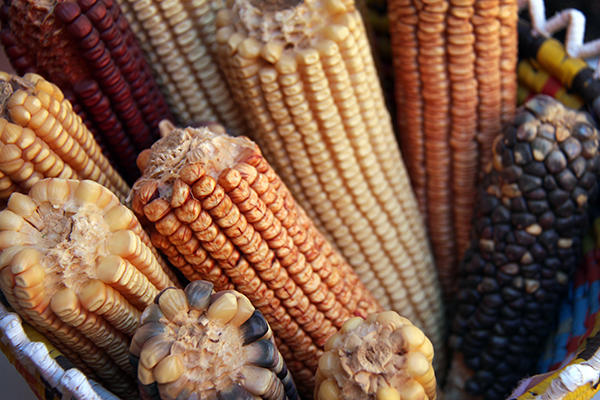Press and News Adapting with crop diversity – an interview on climate change

An interview with Bioversity International scientist Mauricio Bellon on the chapter: 'Climate change and on-farm conservation of crop landraces in centres of diversity', now available open access.
While the 15th session of the Commission on Genetic Resources for Food and Agriculture is being held in Rome this week, we took a moment to sit with Bioversity International scientist Mauricio Bellon, to discuss the role of agricultural biodiversity in climate change adaptation, with insights from a chapter he co-authored ‘Climate change and on-farm conservation of crop landraces in centres of diversity', now available open access.
How will climate change affect crops and smallholder farmers?
We expect climate change to have major impacts on smallholder farmers in the developing world. In terms of crops, climate suitability is a major factor. Many crops that currently grow well in a certain location may no longer do so as time goes on. We are looking particularly at landraces, which are crop varieties that have evolved locally over time directly in response to how farmers select seeds and manage their fields. Many smallholder farmers still rely on traditional landraces, conserving them on farm, so their sensitivity to climate variability and their capacity to evolve and adapt to these changes will determine both the fate of landraces and their value under a changing climate.
How could landraces be valuable to adapt to climate change?
Landraces are usually genetically diverse, which can give them a larger scope for adaptability. But this also depends on the knowledge and management practices of the farmers who maintain them. It also depends on how farmers are obtaining or sharing seeds with other farmers. We call this a seed system. To this day, the majority of farmers, in developing countries especially, still rely on informal networks to get seeds, i.e. from family, friends or local social networks, rather than buying commercial seeds. How farmers access new material will directly influence their ability to choose and adapt what they plant in response to climate change.
Could you give us an example of how landrace diversity and seed systems can influence climate change adaptation?
How climate change will affect different crops is mixed. Maize for example is an interesting case because of its wide area of adaptation and genetic diversity. It might actually start doing better in some areas, but suffer in others. There are examples from scientists who have experimented with growing maize landraces at altitudes they are not originally adapted to, to see how they would cope. They found that mid-elevation and lowland landraces still did quite well at higher altitudes, whereas highland landraces did not do so well under warmer conditions. So from a seeds systems perspective, it would make sense to link highland farmers to communities growing maize in drier, mid-altitude areas.
How could these links be made in practice?
Broadening farmers’ seed networks needs support. It’s a matter of encouraging seed exchange visits, or linking farmers through diversity seed fairs or forums. They need opportunities to exchange knowledge and practices as well. One difficulty with climate change is that a lot of local knowledge that farmers may have about the performance of their varieties is no longer reliable; encouraging cross-community experimentation with different crop varieties may be one way to overcome this and have farmers support each other. Of course, there is also a need to strengthen farmer capacity to store seeds and save seeds, so that they can have continuous access to diversity.
Any last thoughts?
The key message here is that climate change and its impact on landraces and on-farm conservation is complex. Different crops will be affected differently, and the ability of landraces to adapt will determine how much they will help farmers cope with the effects of climate change. In some cases, changing environmental conditions will be so great that landraces will not be able to evolve fast enough. There is a need to monitor changes in adaptation and evolution processes at a global scale, so that scientists and farmers can better identify genes and traits of crops that will be useful in different places.
Read the full chapter by Bioversity International scientists Mauricio Bellon and Jacob van Etten:
‘Climate change and on-farm conservation of crop landraces in centres of diversity'from Plant Genetic Resources and Climate Change
